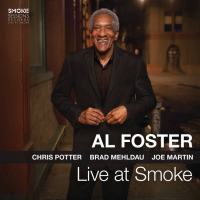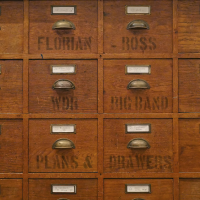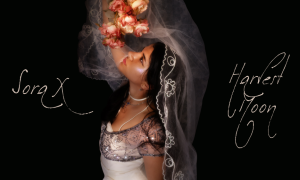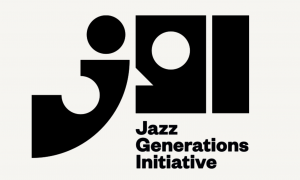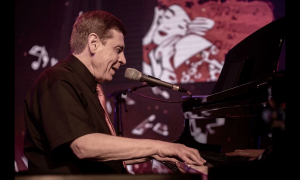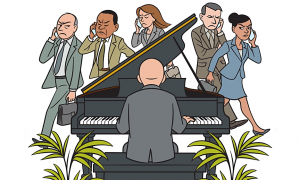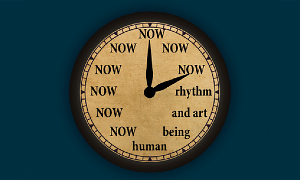
James Moody, a bebop pioneer and seductive improviser whose mischievous sense of humor masked a highly serious and industrious saxophonist, flutist, composer and arranger, died Thursday in San Diego. He was 85. [Photo of James Moody at the 2007 Monterey Jazz Festival by Paul Slaughter]
Moody embodied the entire history of post-war jazz, beginning with his earliest recording in June 1946 as a member of Dizzy Gillespie's big band at New York's Spotlite Club. But Moody's initial audition for the band didn't go well. According to Ira Gitler's liner notes for Dizzy Gillespie Big Band: Show Time at the Spotlite, Gillespie arranger Gil Fuller rejected the saxophonist, telling him: “Whenever you get it together, come back and you'll get the job. You can come back but you got to develop yourself some lungs and a stronger tone, and then you can play."
When Moody returned in June 1946, he was given a chair in Gillespie's band—the first of many sturdy bounce-backs over the course of his career. In 1948, Moody began to show his pronounced tongue-in-cheek touch, naming his first recording as a leader The Fuller Bop Man—either as a gentle elbow to the arranger, a play on the brush company, or both.
What set Moody apart from the crowd of exceptional saxophonists in the late 1940s was his fluid swing, voluptuous tone and crafty lyricism. A solo by Moody typically was seamless, sophisticated and staggeringly melodic.
On several occasions, his improvised solos on standards wound up prettier and hipper than the original melody lines. Most notable among these was I'm in the Mood for Love, recorded in October 1949 in Sweden. His weaving, improvised line was so natural and shrewd that it eclipsed the song's original, resulting in a new jazz standard called Moody's Mood for Love. Lyrics were added by Eddie Jefferson and recorded by King Pleasure.
Moody returned to the U.S. in the fall of 1951, launching a post-bop career that embraced elements of rhythm & blues. By the mid-50s, with the advent of the 12-inch LP, Moody began recording a series of successful albums for Argo, including Flute 'N' the Blues and, one of his finest albums, Last Train from Overbrook. Moody recorded the album following a six-month stay at the Overbrook Hospital in Cedar Grove, N.J., after a fire destroyed his band's music and instruments.
Though Moody recorded often from the '60s onward (he appeared on 267 sessions), he remained a staunch advocate of bebop. As an early developer of the '40s movement, Moody was a direct link to the genre's hip style, playful sense of humor and passion for intellectual curiosity. On stage, Moody could maneuver effortlessly between bop standards such as Good Bait to American Songbook ballads like Polka Dots and Moonbeams. Most of his appeal came from a lush romanticism and sensitivity found lacking in many of his bop contemporaries, who tended to focus more on speed and one-upmanship. [Photo, from left, of James Moody, Sonny Stitt and Dizzy Gillespie at the Hollywood Bowl in 1975 by Paul Slaughter]
In later years, Moody took pride in displaying a puckish stage persona. But for those who knew him well, that playfulness was something of a ruse, and a dangerous decoy at that. Woe unto the musicians who misjudged Moody's whimsical nature and failed to bring their A-game. Moody had no patience for anything less than complete depth and devotion to the music. [Photo of James Moody and wife Linda in 2007 by Paul Slaughter]
I regret not being more aggressive about reaching out to interview Moody. His busy performing schedule didn't allow for much time for phoners or sit-downs. But I did have an occasion back in 1997 to visit with him in the green room at the Blue Note in New York with my young daughter in tow. Moody and his wife Linda showered her with attention, and to this day my daughter still talks of that night. Before departing, we all posed for a photo (along with Gil Goldstein), which was snapped by Linda.
Moody was a gentle giant—always leaving audiences and fellow jazz legends awe-struck by his abilities. But Moody also was much more complex a musician than most people realized. To fully understand the brilliance of his choices and appeal, you have to listen to the same track repeatedly to catch the speed of his mind and beauty of what emerged. Moody was passionate and exceptional.
Here are my favorite 10 James Moody tracks, ordered by date:
Moody embodied the entire history of post-war jazz, beginning with his earliest recording in June 1946 as a member of Dizzy Gillespie's big band at New York's Spotlite Club. But Moody's initial audition for the band didn't go well. According to Ira Gitler's liner notes for Dizzy Gillespie Big Band: Show Time at the Spotlite, Gillespie arranger Gil Fuller rejected the saxophonist, telling him: “Whenever you get it together, come back and you'll get the job. You can come back but you got to develop yourself some lungs and a stronger tone, and then you can play."
When Moody returned in June 1946, he was given a chair in Gillespie's band—the first of many sturdy bounce-backs over the course of his career. In 1948, Moody began to show his pronounced tongue-in-cheek touch, naming his first recording as a leader The Fuller Bop Man—either as a gentle elbow to the arranger, a play on the brush company, or both.
What set Moody apart from the crowd of exceptional saxophonists in the late 1940s was his fluid swing, voluptuous tone and crafty lyricism. A solo by Moody typically was seamless, sophisticated and staggeringly melodic.
On several occasions, his improvised solos on standards wound up prettier and hipper than the original melody lines. Most notable among these was I'm in the Mood for Love, recorded in October 1949 in Sweden. His weaving, improvised line was so natural and shrewd that it eclipsed the song's original, resulting in a new jazz standard called Moody's Mood for Love. Lyrics were added by Eddie Jefferson and recorded by King Pleasure.
Moody returned to the U.S. in the fall of 1951, launching a post-bop career that embraced elements of rhythm & blues. By the mid-50s, with the advent of the 12-inch LP, Moody began recording a series of successful albums for Argo, including Flute 'N' the Blues and, one of his finest albums, Last Train from Overbrook. Moody recorded the album following a six-month stay at the Overbrook Hospital in Cedar Grove, N.J., after a fire destroyed his band's music and instruments.
Though Moody recorded often from the '60s onward (he appeared on 267 sessions), he remained a staunch advocate of bebop. As an early developer of the '40s movement, Moody was a direct link to the genre's hip style, playful sense of humor and passion for intellectual curiosity. On stage, Moody could maneuver effortlessly between bop standards such as Good Bait to American Songbook ballads like Polka Dots and Moonbeams. Most of his appeal came from a lush romanticism and sensitivity found lacking in many of his bop contemporaries, who tended to focus more on speed and one-upmanship. [Photo, from left, of James Moody, Sonny Stitt and Dizzy Gillespie at the Hollywood Bowl in 1975 by Paul Slaughter]
In later years, Moody took pride in displaying a puckish stage persona. But for those who knew him well, that playfulness was something of a ruse, and a dangerous decoy at that. Woe unto the musicians who misjudged Moody's whimsical nature and failed to bring their A-game. Moody had no patience for anything less than complete depth and devotion to the music. [Photo of James Moody and wife Linda in 2007 by Paul Slaughter]
I regret not being more aggressive about reaching out to interview Moody. His busy performing schedule didn't allow for much time for phoners or sit-downs. But I did have an occasion back in 1997 to visit with him in the green room at the Blue Note in New York with my young daughter in tow. Moody and his wife Linda showered her with attention, and to this day my daughter still talks of that night. Before departing, we all posed for a photo (along with Gil Goldstein), which was snapped by Linda.
Moody was a gentle giant—always leaving audiences and fellow jazz legends awe-struck by his abilities. But Moody also was much more complex a musician than most people realized. To fully understand the brilliance of his choices and appeal, you have to listen to the same track repeatedly to catch the speed of his mind and beauty of what emerged. Moody was passionate and exceptional.
Here are my favorite 10 James Moody tracks, ordered by date:
- Out of Nowhere (with the Swedish Crowns, 1949)
- I'm in the Mood for Love (1949)
- Again (1951)
- Cherokee (with strings, 1951)
- Disappointed (1955)
- Yvonne (Last Train From Overbrook, 1958)
- Workshop (with vocalist Eddie Jefferson, 1959)
- Stablemates (At the Jazz Workshop, 1961)
- I Cover the Waterfront (Flute 'n' the Blues, with Eddie Jefferson, 1961)
- East of the Sun (4A, 2009)
JazzWax clips: Here's James Moody in 1963, as a member of he Dizzy Gillespie Quintet...
Here's Moody on Wave...
This story appears courtesy of JazzWax by Marc Myers.
Copyright © 2025. All rights reserved.




